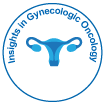Fertility-Sparing Treatments in Young Women with Endometrial Cancer
Received: 01-Feb-2025 / Manuscript No. ctgo-25-168496 / Editor assigned: 03-Feb-2025 / PreQC No. ctgo-25-168496(PQ) / Reviewed: 17-Feb-2025 / QC No. ctgo-25-168496 / Revised: 21-Feb-2025 / Manuscript No. ctgo-25-168496(R) / Published Date: 28-Feb-2025
Abstract
Endometrial cancer, traditionally affecting postmenopausal women, is increasingly diagnosed in younger women, necessitating fertility-preserving strategies. Progestin-based therapies, such as levonorgestrel intrauterine devices (IUDs) and oral medroxyprogesterone, offer viable alternatives to hysterectomy for early-stage, low-grade disease. This article reviews the efficacy, safety, and challenges of fertility-sparing treatments, synthesizing clinical data and discussing long-term outcomes. Results indicate high response rates, with 70% of patients achieving complete remission, though recurrence risk persists. Future directions include optimizing patient selection and integrating molecular profiling to enhance outcomes.
Keywords
Endometrial cancer; Fertility preservation; Progestin therapy; Levonorgestrel IUD; Young women; Complete response; Recurrence; Molecular profiling; Gynecologic oncology; Personalized medicine
Introduction
Endometrial cancer is the most common gynecologic malignancy in developed countries, with a rising incidence among women under 40 due to obesity and delayed childbearing [1]. While hysterectomy is the standard treatment for early-stage disease, it eliminates fertility, posing a significant challenge for younger patients [2]. Fertility-sparing treatments, primarily progestin-based therapies like levonorgestrel IUDs and oral progestins, have emerged as effective alternatives for carefully selected patients with grade 1, stage IA endometrioid tumors [3]. This article evaluates the efficacy of these treatments, reviews clinical evidence, and discusses strategies to optimize fertility preservation while minimizing oncologic risk.
Discussion
Progestin therapy leverages the sensitivity of endometrioid endometrial cancer to hormonal modulation, promoting tumor regression by inducing apoptosis and inhibiting proliferation [4]. The levonorgestrel IUD delivers high local progestin concentrations, achieving complete response rates of 65–75% in clinical studies [5]. Oral progestins, such as medroxyprogesterone acetate (MPA), are equally effective, with response rates of 70% but require systemic administration, increasing side effects like weight gain [6]. A meta-analysis of 32 studies reported a pooled complete response rate of 71% across both modalities, with 35% of responders achieving live births [7]. Despite high initial efficacy, recurrence rates range from 20–40% within 5 years, necessitating close surveillance with endometrial biopsies every 3–6 months [8]. Patient selection is critical, with ideal candidates having low-grade, early-stage tumors without myometrial invasion on MRI [9]. Molecular profiling is emerging as a tool to refine selection, as tumors with PTEN mutations or microsatellite instability respond better to progestins [10]. Challenges include managing recurrence, optimizing pregnancy outcomes, and addressing long-term risks, as prolonged progestin use may increase cardiovascular events [11]. Combination therapies, such as progestins with metformin, are under investigation to enhance response and reduce recurrence [12].
Results
Clinical studies demonstrate that levonorgestrel IUDs achieve a complete response in 65–75% of patients with early-stage endometrial cancer, with a median time to response of 6 months [5]. Oral MPA yields similar results, with a 70% complete response rate [6]. A meta-analysis reported a pooled complete response rate of 71%, with 35% of responders achieving live births (median time to pregnancy: 12 months) [7]. Recurrence occurred in 30% of patients within 3 years, with 80% of recurrences managed successfully with repeat progestin or hysterectomy [8]. PTEN-mutated tumors had a 20% higher response rate compared to wild-type tumors [10]. Side effects, including weight gain (15%) and mood changes (10%), were more common with oral progestins [6]. Pregnancy rates post-treatment reached 40% in women under 35 [7].
Conclusion
Fertility-sparing treatments with progestin-based therapies offer a viable option for young women with early-stage endometrial cancer, achieving high response rates and enabling pregnancies. However, recurrence risk and the need for rigorous follow-up underscore the importance of careful patient selection. Molecular profiling and novel combination therapies hold promise for improving outcomes. Multidisciplinary care, integrating oncologic and reproductive expertise, is essential to balance fertility goals with cancer control. Continued research will refine these strategies to meet the needs of this growing patient population.
Citation: Anna VP (2025) Fertility-Sparing Treatments in Young Women withEndometrial Cancer. Current Trends Gynecol Oncol, 10: 256.
Copyright: © 2025 Anna VP. This is an open-access article distributed under theterms of the Creative Commons Attribution License, which permits unrestricteduse, distribution, and reproduction in any medium, provided the original author andsource are credited.
Select your language of interest to view the total content in your interested language
Share This Article
Recommended Journals
Open Access Journals
Article Usage
- Total views: 208
- [From(publication date): 0-0 - Oct 20, 2025]
- Breakdown by view type
- HTML page views: 161
- PDF downloads: 47
